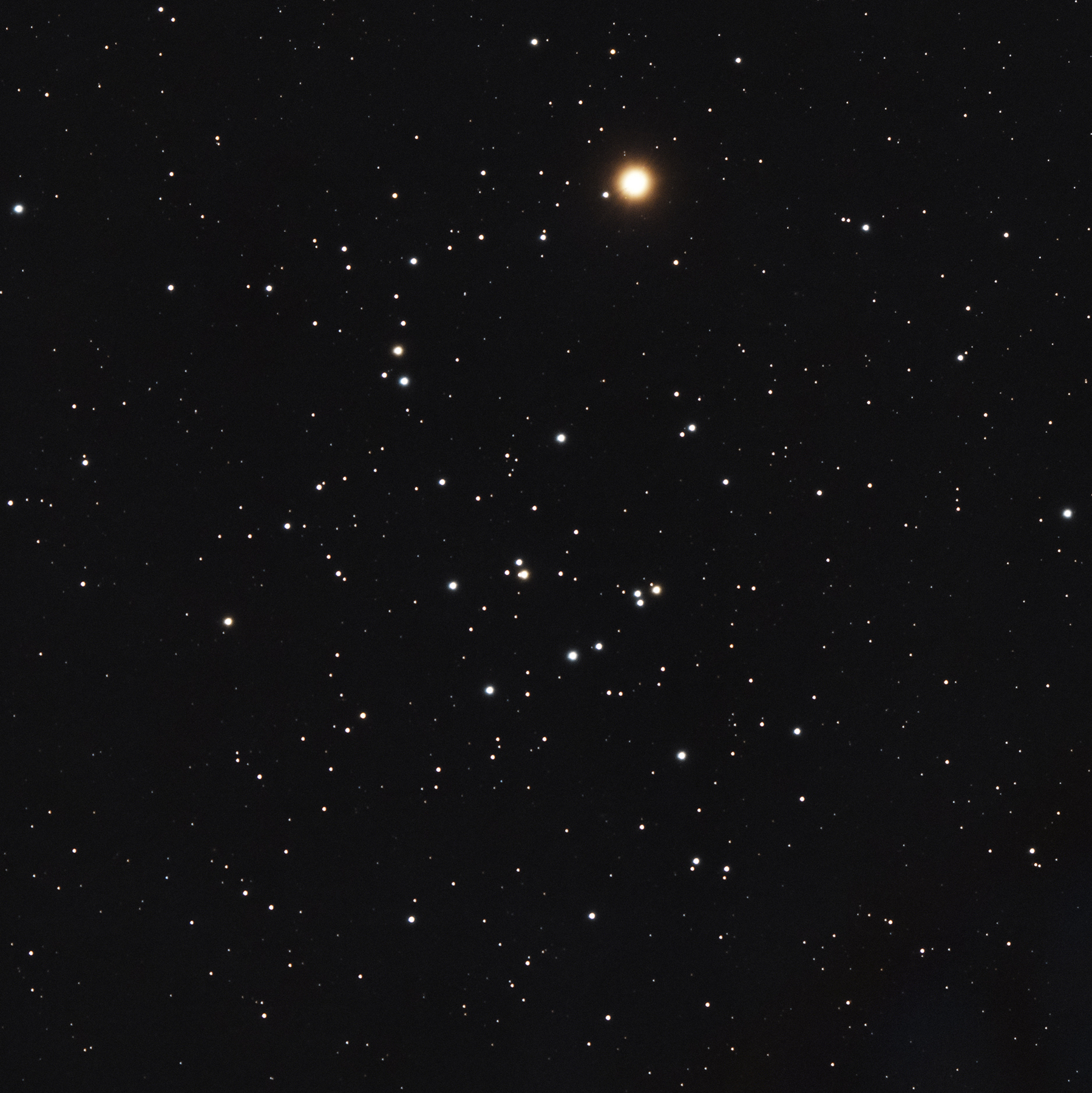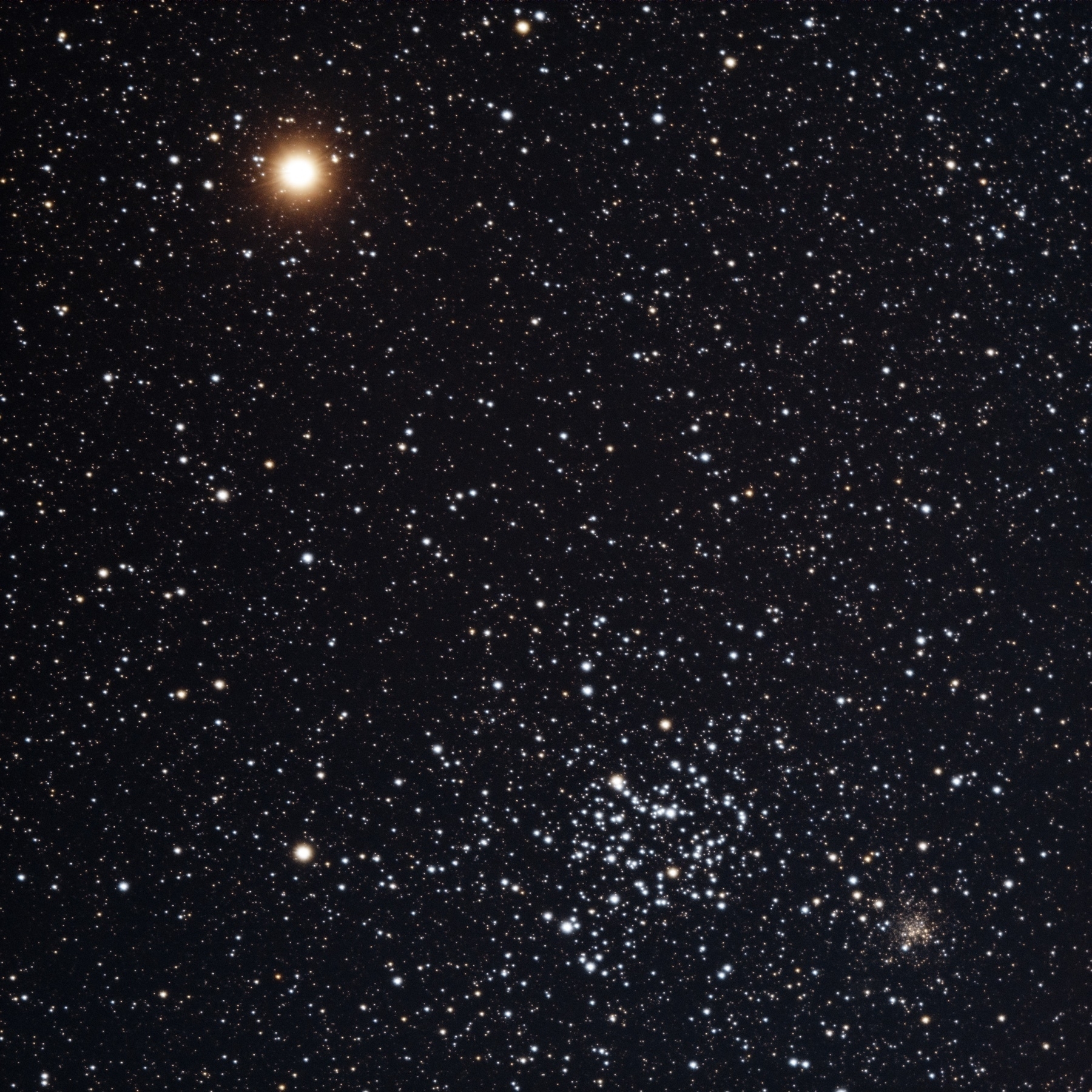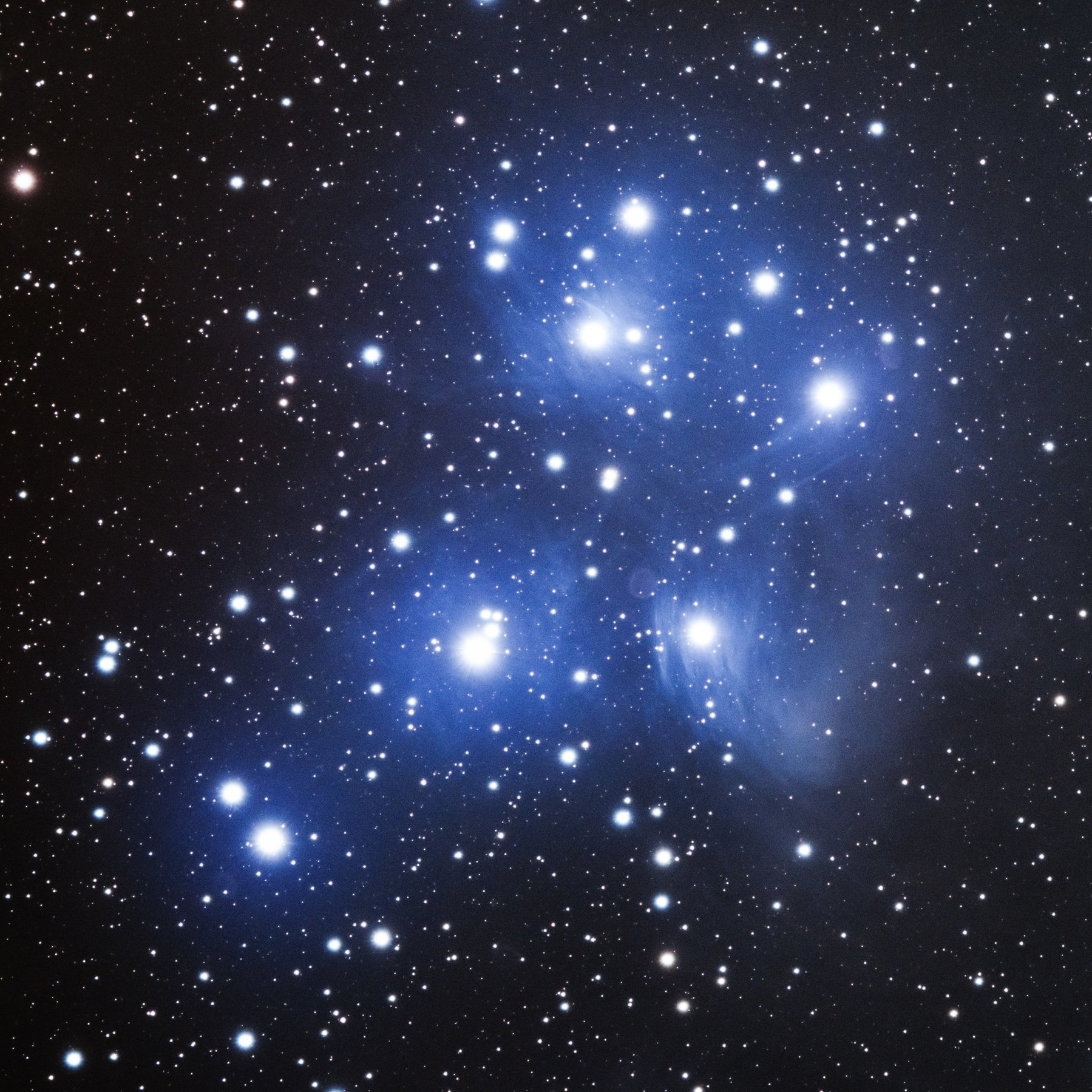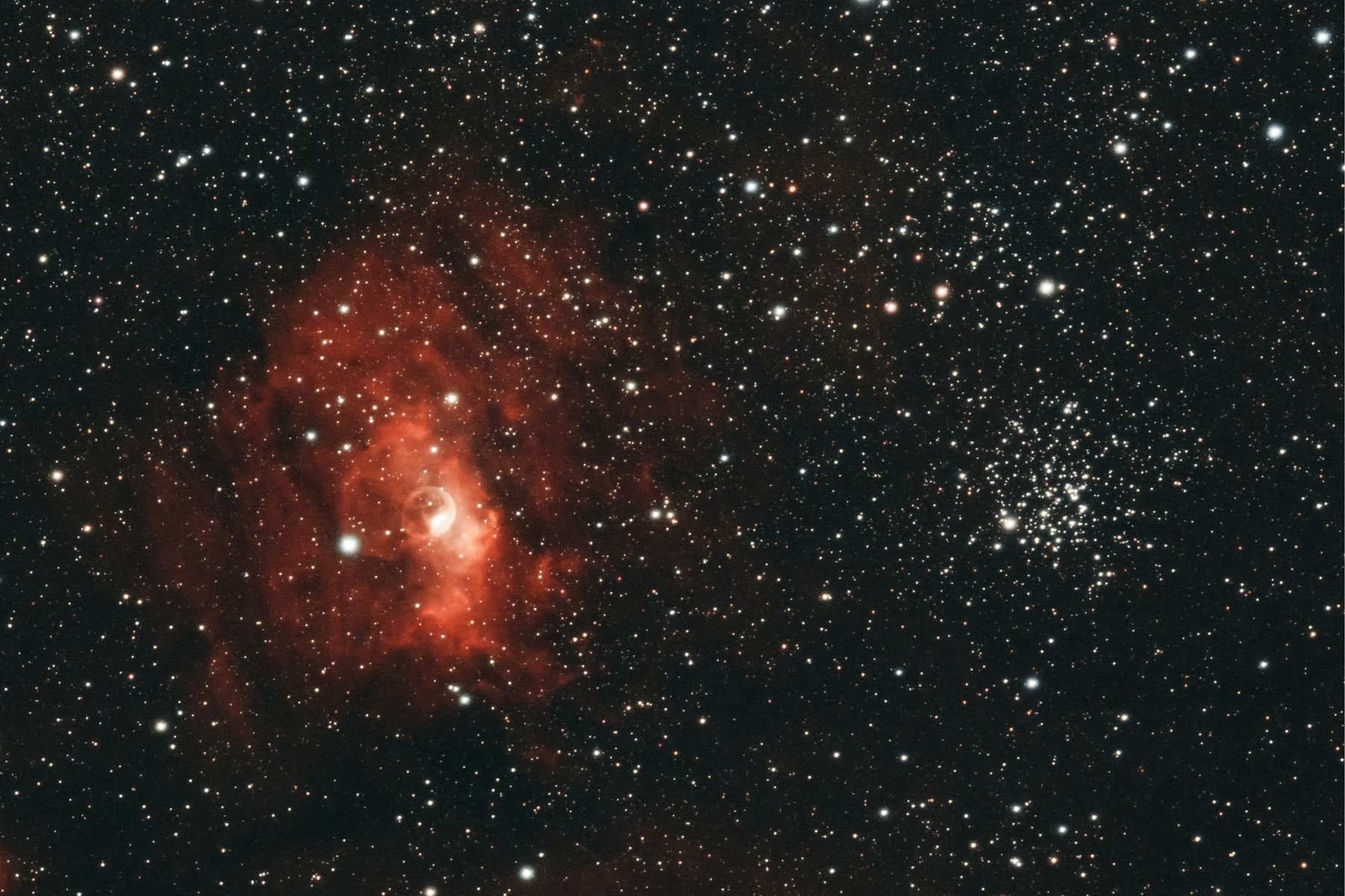star cluster
Mars in the Beehive

Mars and the Beehive star cluster (M44) in Cancer, which is one of the closest star clusters to us (at about 600 light years) and it can be seen with naked eyes. All the stars in this cluster are quite young - only ~600 million years of age.
Mars and M35
Mars visiting Gemini on March 30, 2023. Open star cluster M35 at the bottom is at 2600 light years away and made up of young stars that are only 100 million years old. At the bottom right, the cluster of yellow stars (NGC2158) is made up of stars that are 10 times older and 6 times farther.

The Pleiades
The Pleiades (M45) aka The Seven Sisters aka Subaru is an open star cluster ~444 light years away. It is the nearest star cluster to us. The reflection nebulae around the young stars are left from the time of their formation about 100 million years ago.
WO ZS61; ZWO ASI533MC-Pro; 70 min (35x2m) total exp.

Bubble nebula - Nov2022

The Bubble nebula (NGC 7635) and an open cluster M52 in the constellation Cassiopeia. They appear next to each other but the nebula is ~11000 LY away while M52 is closer at a distance of only ~5000 LY. The bubble is about 10 LY across and is formed because of the intense radiation from the star inside it pushing the interstellar gas and dust.
This image consists of almost 3 hours of total exposure (35x5m). Optolong LeXtreme narrowband filter with ZWO ASI533MC-pro on WO ZS61. Processed with SIRIL and PS.
Stargazings 10-18-08
It was a quick half hour session with Adit calling me to come in every 5 minutes. A clear and cold night made everything look very beautiful. These sky conditions along with the good quality optics of William Optics Megrez 90 were responsible for excellent viewing with good contrast. Here is what I was able to catch:
Jupiter: All four moon visible; all were on the same side.
M22 and M28 from Saggitarius: It was my first time to see these two clusters. They can be found around lambda Saggitarius. M22 is a big and very dense, nice looking, globular star cluster. Very easy to spot. M28 is much smaller and fainter.
M57: “Ring nebula” a planetary nebula from Lyra.
M56: a globular star cluster from Lyra. It lies on the straight line between M57 and Albeiro (beta-Cygnus), almost at the midpoint.
Albeiro: Famous double star in Cygnus. Two bright colorful stars: Orange and blue.
M31 and M32: Andromeda and its companion galaxy.
NGC869 and NGC884: Double cluster in Perseus.